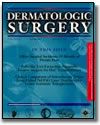The Safety of Liposuction: Results of a National Survey

Dermatologic Surgery
2002 Abstract
0211-971 Housman
Housman TS, Lawrence N, Mellen BG, George MN, Filippo JS, Cerveny KA, DeMarco M,
Feldman SR, Fleischer AB. The safety of liposuction: results of a national survey. Dermatol Surg. 2002 Nov;28(11):971-8. PMID: 12460288
Department of Dermatology, Wake Forest University School of Medicine,Winston-Salem, North Carolina 27157, USA.
BACKGROUND:
Liposuction procedures are increasing in frequency and may be performed in hospitals, ambulatory surgery centers, or physician offices. Deaths associated with liposuction and previous surveys of liposuction safety have raised concern about the safety of office-based surgery.
OBJECTIVE:
To determine the safety of office-based, tumescent liposuction among dermatologic surgeons.
METHODS:
A survey mailed out to dermatologic surgeons in August 2001 requested retrospective information regarding the number of patients undergoing liposuction, the setting in which the procedures were performed, and the complications that occurred during the 7-year period from 1994 to 2000. A detailed complication record was requested for each serious adverse event or death reported. Surveys were mailed to 517 worldwide members of the American Society for Dermatologic Surgery (ASDS) listed as performing liposuction; 505 had adequate contact information. The main outcome mesure was the rate of serious adverse events (SAEs) or deaths per 1000 liposuction procedures for each service setting and for each level of conscious sedation.
RESULTS:
The overall response rate was 89% (450/505), and of these, 78% (349/450) perform liposuction. A total of 267 dermatologic surgeons completed the survey; 261 provided data on 66,570 liposuction procedures. No deaths were reported. The overall serious adverse event rate was 0.68 per 1000 cases. The SAE rates were higher for hospitals and ambulatory surgery centers than for nonaccredited office settings. SAE rates were also higher for tumescent liposuction combined with intravenous or intramuscular sedation than combined with oral or no sedation.
CONCLUSION:
Office-based tumescent liposuction performed by dermatologic surgeons is safe, with a lower complication rate than hospital-based procedures. Future legislation should recognize the proven safety of this procedure as performed by dermatologic surgeons in their offices.
